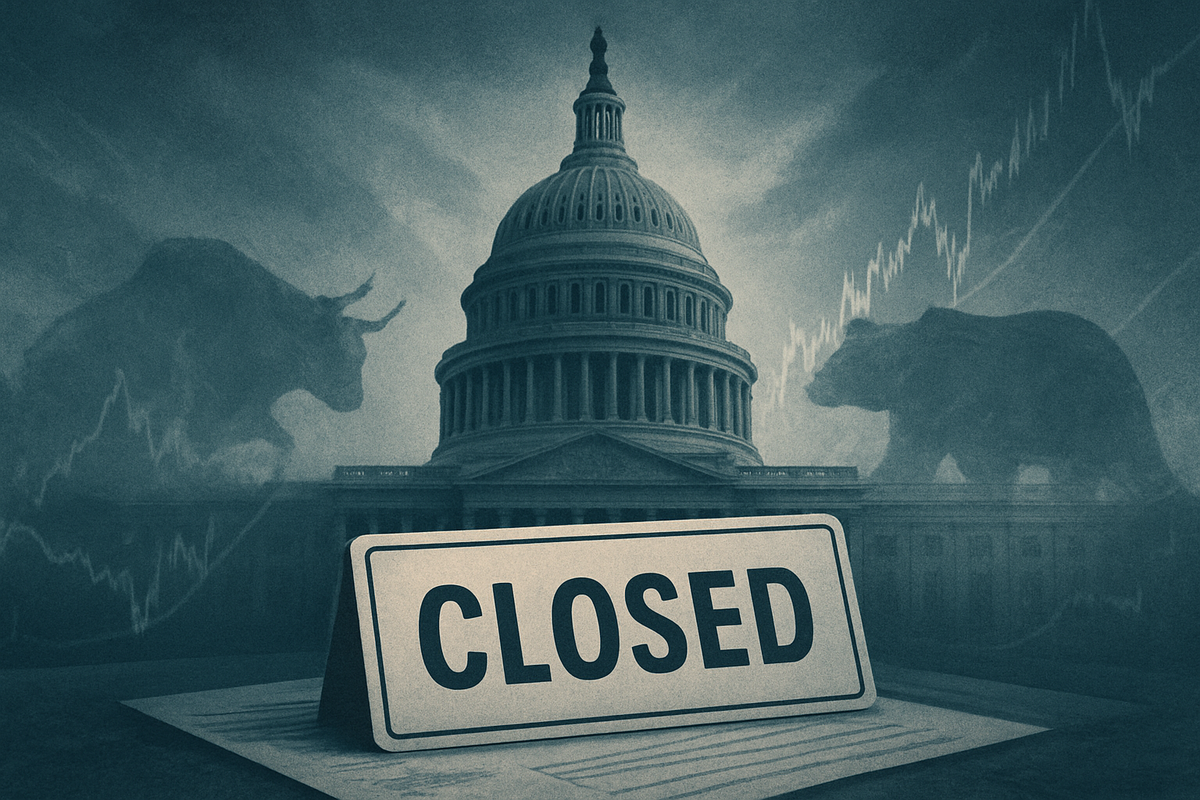
As the U.S. political landscape continues to present its unique set of challenges, the specter of a government shutdown remains a perennial concern for investors. These periods, marked by a cessation of non-essential federal operations due to budgetary impasses, inject a significant degree of political uncertainty into the financial markets. While often temporary, the immediate implications can include heightened market volatility, a dent in investor and consumer confidence, and disruptions to key economic data releases, making informed decision-making more arduous.
For investors, understanding the dynamics of government shutdowns is crucial for developing resilient portfolio strategies. While historical data suggests the stock market often proves surprisingly resilient over the long term, the short-term turbulence can create both risks and opportunities. This article delves into actionable insights and strategic considerations for navigating these politically charged periods, ensuring investors are well-equipped to protect and potentially grow their assets amidst the uncertainty.
Understanding the Anatomy of a Shutdown: Causes, Timeline, and Initial Market Tremors
U.S. government shutdowns are a stark manifestation of legislative deadlock, occurring when Congress fails to pass, or the President refuses to sign, legislation to fund federal agencies before the new fiscal year begins on October 1. Rooted in the Antideficiency Act, which prohibits federal spending without appropriation, these events lead to the furlough of hundreds of thousands of non-essential federal workers, while essential services continue, often with personnel working without immediate pay. The causes are typically deep-seated partisan disagreements over budgetary allocations, spending levels, or controversial policy riders attached to appropriations bills. Historically, debates over healthcare, border security, or significant spending cuts have been common flashpoints.
The timeline leading up to a shutdown is usually characterized by escalating rhetoric and last-minute negotiations. As deadlines approach, the market often reacts with increased volatility, reflecting investor anxiety. Once a shutdown commences, initial reactions can include a slump in stock and bond prices. However, historical data reveals a nuanced picture. The S&P 500 has, on average, seen modest gains during shutdown periods since 1976, and notably, has risen during every government shutdown since 1990. Key players involved are primarily the U.S. Congress, the President, and various federal agencies whose operations are directly impacted. The initial market reaction, while often negative in the immediate lead-up, tends to stabilize as the market anticipates an eventual resolution, which has always occurred.
Navigating the Sectoral Divide: Winners and Losers in a Shutdown Economy
Government shutdowns create a ripple effect across various economic sectors, leading to distinct winners and losers among public companies. Understanding these dynamics is paramount for investors seeking to rebalance their portfolios strategically.
Companies heavily reliant on government contracts, particularly in defense and information technology, often face immediate revenue disruptions. Firms like Lockheed Martin (NYSE: LMT), Raytheon Technologies (NYSE: RTX), and General Dynamics (NYSE: GD) could experience delays in payments or new contract awards, impacting their short-term cash flow and project timelines. Similarly, smaller government contractors, who typically lack the robust financial reserves of larger corporations, can face significant hardship as they are generally not guaranteed back pay for services rendered during a shutdown.
Conversely, certain sectors may exhibit greater resilience or even present opportunities. Utilities (e.g., NextEra Energy (NYSE: NEE)) and healthcare (e.g., UnitedHealth Group (NYSE: UNH)) are often considered defensive plays, as demand for their services remains relatively stable irrespective of government operations. Companies in essential consumer goods, whose demand is less elastic, may also fare better. Furthermore, the broader uncertainty can sometimes drive investors towards large-cap, stable companies with strong balance sheets, or towards sectors perceived as less directly exposed to federal spending, such as certain technology giants or established consumer staples. The travel and leisure sector, however, can be negatively impacted by the closure of national parks and potential disruptions to air travel dueating to staffing shortages, affecting companies like Southwest Airlines (NYSE: LUV) or Marriott International (NASDAQ: MAR).
Broader Implications and Historical Parallels
Beyond immediate market reactions and specific company impacts, government shutdowns carry wider significance, influencing broader industry trends and regulatory landscapes. These events underscore the fragility of political consensus and can erode business and consumer confidence, potentially leading to reduced spending and investment across the economy. While much of the lost economic activity is eventually recovered, estimates suggest that a portion, possibly around 30%, represents a permanent loss to the national economy, with each week of shutdown potentially reducing annualized GDP growth by 0.1% to 0.2%.
The regulatory and policy implications can be substantial. Delays in critical government functions, such as Food and Drug Administration (FDA) approvals for new drugs (e.g., impacting Pfizer (NYSE: PFE) or Johnson & Johnson (NYSE: JNJ)), environmental permits, or small business loan processing through the Small Business Administration (SBA), can hinder innovation and growth. This creates a backlog that can take weeks or months to clear even after the government reopens. Historically, the U.S. has experienced numerous shutdowns, with notable examples including the 1995-1996 shutdown under President Clinton and the 2018-2019 shutdown under President Trump. These precedents demonstrate that while the immediate market impact is often contained, the longer the shutdown, the greater the potential for broader economic damage and a decline in international perception of U.S. governance stability.
What Comes Next: Navigating the Path Forward
Looking ahead, the short-term outlook during a government shutdown is typically characterized by continued market volatility and heightened uncertainty. Investors should brace for potential swings and be prepared for a period of reduced economic data availability, which can complicate fundamental analysis. In the long term, however, once a resolution is reached, markets have historically demonstrated a strong capacity for recovery. The S&P 500 has, on average, seen a significant jump in the 12 months following a shutdown, suggesting that broader macroeconomic trends and corporate earnings ultimately exert more influence than temporary political impasses.
For investors, potential strategic pivots include re-evaluating sector allocations, increasing exposure to defensive assets, or identifying undervalued opportunities created by temporary price dislocations. For instance, quality companies in sectors temporarily hit by the shutdown, such as certain government contractors, might present attractive entry points once the political resolution appears imminent. Market challenges may include reduced liquidity in certain segments and difficulty in forecasting economic performance without complete data. However, opportunities can emerge for active investors willing to conduct thorough due diligence and take a contrarian view. Potential scenarios range from a swift resolution with minimal lasting impact to a prolonged deadlock that could more significantly impede economic growth and corporate profitability.
Comprehensive Wrap-Up: Key Takeaways for the Prudent Investor
In summary, while U.S. government shutdowns are disruptive political events, their long-term impact on the overall stock market has historically been less severe than the immediate headlines might suggest. Key takeaways for investors include the importance of maintaining a diversified portfolio, understanding the specific vulnerabilities and resilience of different sectors, and recognizing that short-term volatility often gives way to longer-term market recovery.
Moving forward, investors should prioritize a robust investment strategy that accounts for political uncertainties. This involves monitoring legislative developments closely, but also resisting the urge to make rash decisions based on short-term market reactions. Focus on companies with strong fundamentals, healthy balance sheets, and diverse revenue streams that are less dependent on direct government spending. What investors should watch for in the coming months includes any signs of a renewed budget impasse, the duration and scope of any potential shutdown, and the subsequent pace of economic data release and regulatory activity. Ultimately, patience and a long-term perspective remain invaluable assets in navigating the unpredictable currents of political uncertainty in the financial markets.
This content is intended for informational purposes only and is not financial advice






